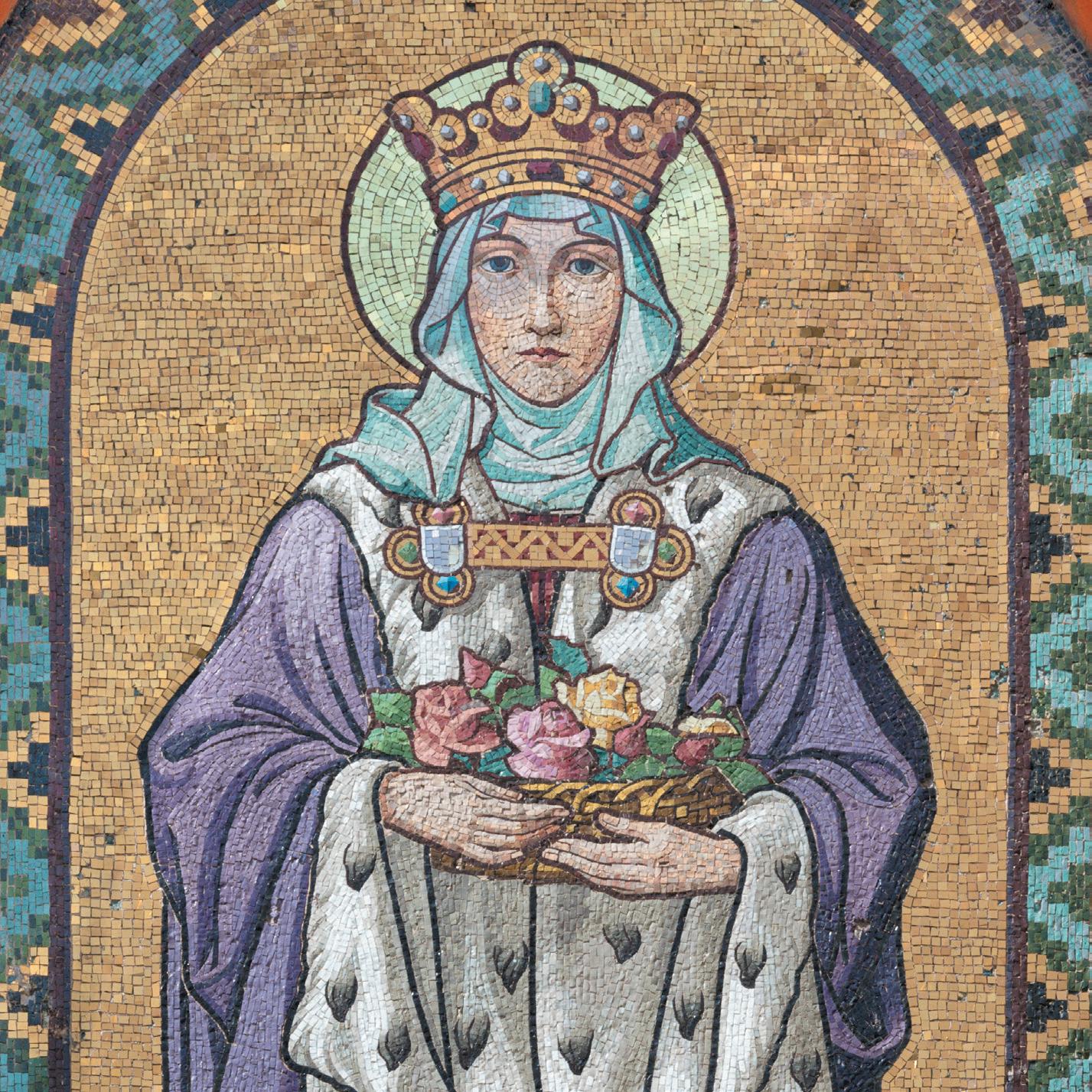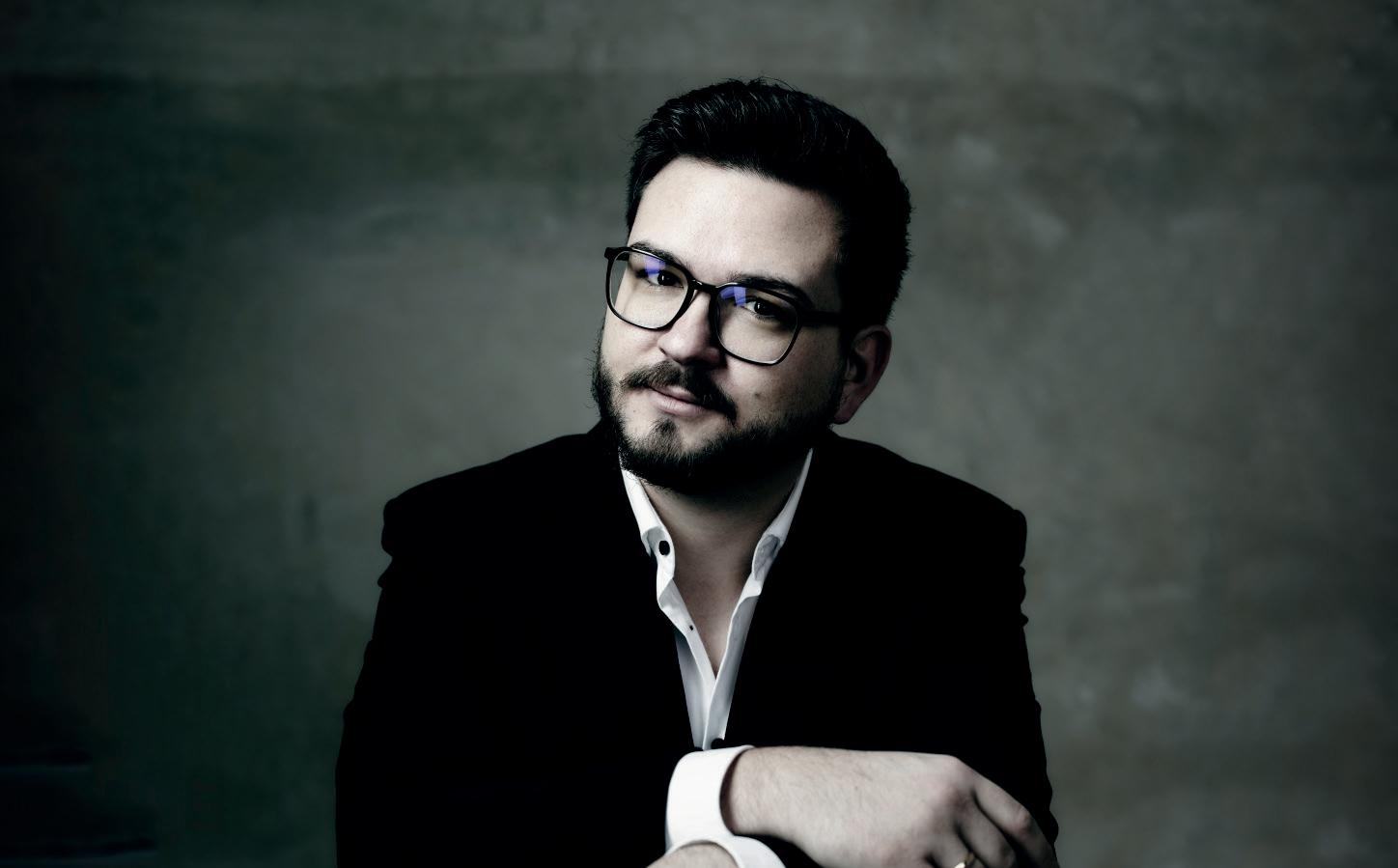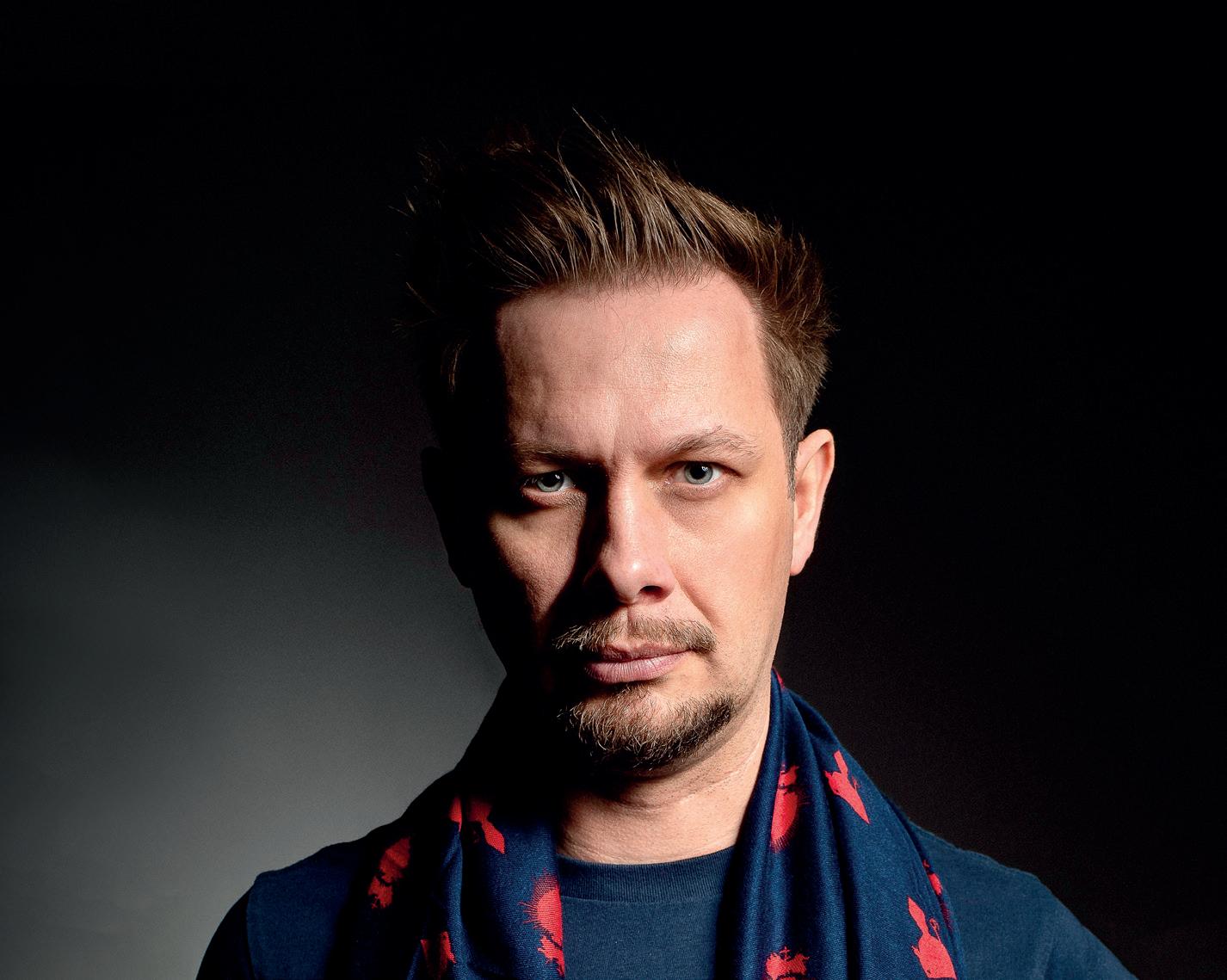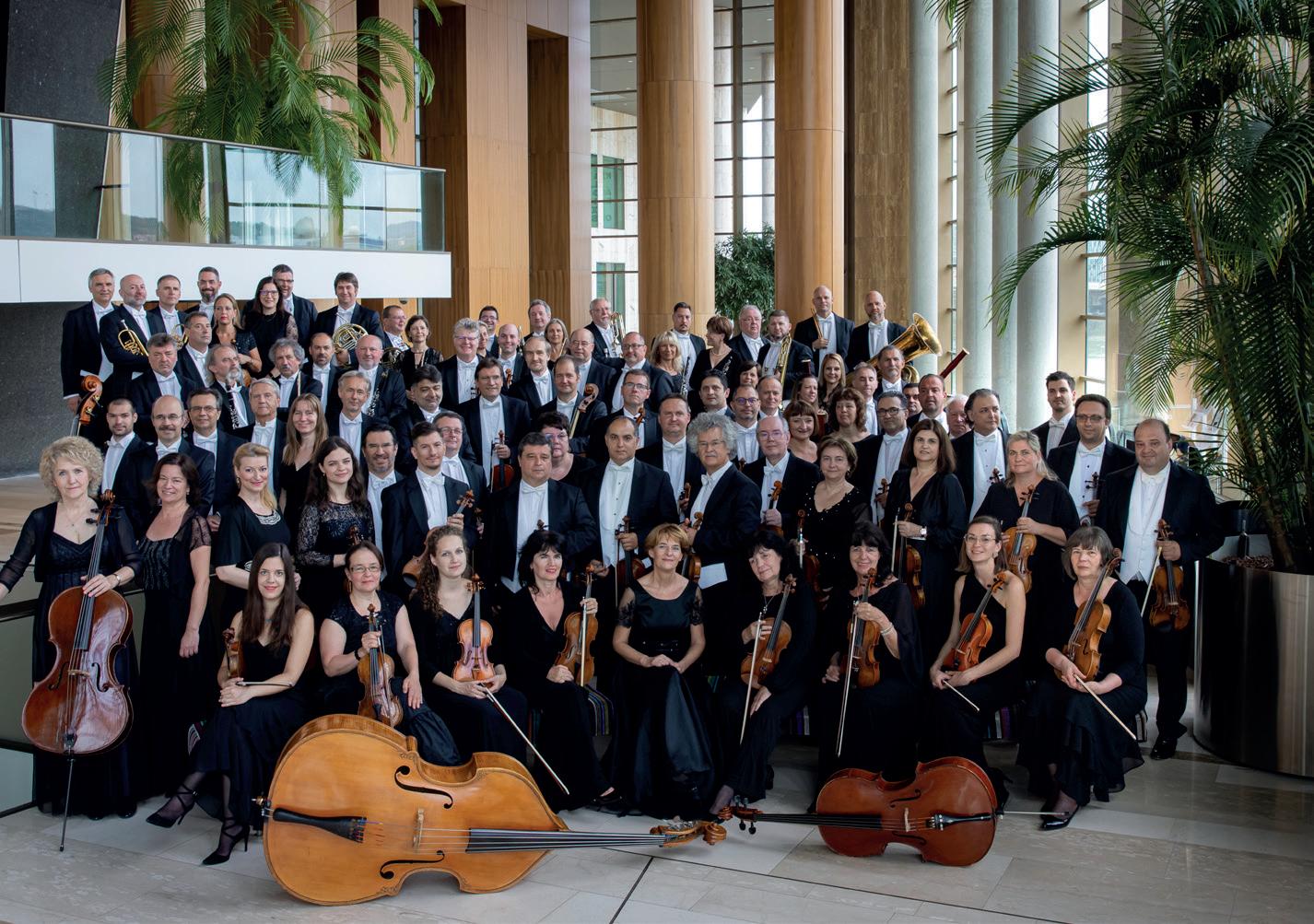
Liszt: The Legend of St Elizabeth
Opening concert of the Liszt Fest
Flagey – Studio 4 13 OCTOBER 2024 | 7 PM
St Elizabeth: Gabriela SCHERER
Landgravin Sophie: Dorottya LÁNG
Landgrave Hermann / Friedrich II: Bogdan TALOS
Landgrave Ludwig: Johannes KAMMLER
Hungarian magnate / Steward: Zoltán NAGY
Young Ludwig: Zsombor CSAPÓ
Young Elisabeth: Adél BÍBER
Featuring: Hungarian National Philharmonic Orchestra, Hungarian National Choir (choirmaster: Csaba SOMOS), Children’s Choir of the Zoltán Kodály
Hungarian Choir School (choirmaster: Ferenc SAPSZON, Borbála SAPSZON)
Conductor: György VASHEGYI
This concert of the Liszt Fest is presented by Müpa Budapest as a side event of the Hungarian Presidency of the Council of the European Union.
From the autumn of 1861, Liszt spent more and more time in Rome, where his interest turned towards church music. In 1862 he completed his first oratorio, The Legend of St. Elizabeth. Liszt already took a strong interest in the life of the Hungarian princess during his Weimar years, and even visited her former home, the castle of Wartburg, in the company of the Grand Duke of Weimar. “My relationship to St. Elizabeth is particularly gentle. Like she, I was born in Hungary, and I spent twelve years that were key to my life and career in Thuringia, very close to the castle of Wartburg, where she lived, and to Marburg, where she died.” In a letter to Mihály Mosonyi, sent from Rome on 10 November, 1862, Liszt described the structure of the oratorio thus: “As for the work itself, all I can tell you is that it is divided into choruses and solos; there are 6 self-contained but interrelated numbers, which are as follows: 1. Elizabeth’s arrival in Wartburg; 2. The miracle of the rose; 3. The crusaders; 4. Duchess Sofia – The banishment of Elizabeth from Wartburg; 5. Elizabeth’s prayer – Chorus of the poor – Death of Elizabeth; and finally, 6. Frederick of Hohenstaufen provides a burial ceremony for the saint. There is additionally an orchestral introduction, whose texture is weightless, melodic, imitational, and a few orchestral movements, like the Crusaders’ march, and an Interlude. The performance of the complete work takes two and a half hours, fills an entire concert night. If my wish is fulfilled, this work will become an integral part of the new Hungarian literature of music. (...) But I still have a lot to say that has been left unsaid; it matters little if they understand or acknowledge it soon enough; when I’m no longer down here, it may all come together eventually. Working as I am, I may hope for as much; till then, I soberly repent my virtuoso fame, tolerating the unfair treatment that is the lot of my compositions these days. You know what I think about all this, my dear friend, and you will not resent my following a higher goal, come what may.” The first performance of the oratorio was held in Pest, on 15 August 1865, on the occasion of the 25th anniversary of the Pest–Buda Musical Society. On the 14th, a final rehearsal was held in front of a capacity audience at the Vigadó, and due to the great success and interest, the show was repeated on the 22nd. Liszt himself was conducting on all three occasions. Kornél Ábrányi, editor in chief of Zenészeti Lapok (the first Hungarian specialist music journal) enthusiastically reported from the final rehearsal: ‘To see and hear Ferenc Liszt, to watch his every movement and expression as he explains his work to the musicians, the singers or the choir: no artist or connoisseur can imagine anything more interesting and instructive. He had to marshal all the spellbinding power of his great mind to put together the parts of his great work in a mere three days.’
Gabriela Scherer
Born in Zurich, Gabriela Scherer studied singing at the Mozarteum in Salzburg under Horiana Branisteanu. She began her career as a member of the Leipzig Opera and later of the Bayerische Staatsoper in Munich. As a young dramatic soprano, Gabriela Scherer already performed important roles, including Senta (The Flying Dutchman) and Maddalena (Andrea Chénier). In the 2021/2022 season, she made her debut as Tosca (Theater Dortmund) and as Elsa in Lohengrin in Leipzig, where her partner was Klaus Florian Vogt. She has worked with such conductors as Simone Young, Thomas Hengelbrock, Kent Nagano, Riccardo Chailly, Asher Fisch, Ulf Schirmer, John Eliot Gardiner, Lawrence Foster, Christopher Hogwood, Marek Janowski and Markus Bosch.
Johannes Kammler
The German singer is one of the most sought-after baritones of his generation. He made his debut in 2018, at the Salzburg Festival in Gottfried von Einem’s opera, The Trial. The following year, the Canadian Opera Company in Toronto signed him for the role of Guglielmo (Mozart: Così fan tutte). Next, he was invited by Rolando Villazón and ZDF/ARTE to Stars von Morgen, a Berlin television show. In the summer of 2020 he was the soloist in a performance of Mahler’s Songs of a Wayfarer at the Bregenz Festival, and then in 2021 at the Glyndebourne Festival Opera. Since the 2018/2019 season, Johannes Kammler has been a member of the Stuttgart State Opera.

Bogdan Talos
Bogdan Talos graduated from the Gheorghe Dima Academy of Music in Cluj-Napoca in 2005. At the beginning of the 2023/2024 season, he returned to the Opera de Paris to sing the role of Leporello. He made his debut at London’s Royal Opera House as Monterone (Verdi: Rigoletto), while the Tokyo Spring Music Festival invited him to sing Colline in Puccini’s La bohème. He makes his debut with his company, the Deutsche Oper am Rhein, in two roles, each in a new production: as Basilio in Rossini’s The Barber of Seville and as Daland in Wagner’s The Flying Dutchman.
Dorottya Láng
She was born in Budapest, and completed her studies at the Vienna University of Music and Performing Arts under Claudia Visca. Her prizes and awards include the prize of the 2012 Emmerich Smola Competition, the third prize of the 2011 Wigmore Hall / Kohn Foundation International Song Competition, and a prize at the 2013 Mozart Academy in Aix-enProvence. She appeared in several productions of the Hamburg Opera (The Return of Odysseus, Parsifal, Cavalleria rusticana, The Magic Flute, La traviata), and likes to sing at concerts and lied recitals. In 2017 she performed her first solo concert to a Hungarian audience, singing the songs of Liszt, Berlioz and Wagner at the Budapest Wagner Days.


Zoltán Nagy
He began his vocal studies at the Gheorghe Dima Academy of Music with Gheorghe Roşu, and was later a student of Boris Bakow at the Mozarteum in Salzburg. He started his international career as the youngest member of the Vienna State Opera, where he sang with some of the world’s leading artists. He has performed in Hamburg, Leipzig, Nice, Antwerp, Stuttgart, Trieste and Athens. A brilliant Escamillo, he has sung the role in as much as sixteen different productions, including in Palermo, Turin, Singapore and Bilbao.
György Vashegyi
As a founder of the Purcell Choir (1990) and the Orfeo Orchestra (1991), as well as a guest conductor, he is a seminal figure of the performance of early music in Hungary. Uncovering forgotten compositions of early music, he maintains an intensive working relationship with the Baroque Music Centre in Versailles and the Palazzetto Bru Zane Foundation in Venice. In 2008 his work was acknowledged with the Liszt Prize, and in 2024 with the Kossuth Prize; in 2022, France named him Chevalier de
l’Ordre des Arts et des Lettres. A member of the Hungarian Academy of Arts since 2013, he was president of the public body between 2017 and 2023. He was also chair of the National Cultural Council between 2020 and 2024. He is artistic director of the Haydneum – Hungarian Early Music Centre, which was established in 2021 by the Hungarian state on his initiative. He has been general music director of the Hungarian National Philharmonic since November 2022.
Hungarian National Philharmonic Orchestra, Hungarian National Choir The predecessor of the National Philharmonic Orchestra was founded in 1923 as the Metropolitan Orchestra. János Ferencsik stood at its helm for three decades, while Ken’ichiro Kobayashi was music director for ten years. Zoltán Kocsis took over in 1997, and under his leadership the reper toire of the renewed ensemble was expanded with works by Richard Strauss, Debussy, Ravel, Schoenberg, 20th-century and contemporary Hungarian composers, with Bartók’s music becoming particularly prominent in their programming. The venues and festivals they have performed at include New York’s Avery Fisher Hall, Tokyo’s Suntory Hall, Birmingham’s Symphony Hall, the Megaron in Athens, the Enescu Festival in Bucharest, the Festivals of Colmar and the Canary Islands. After the death of Zoltán Kocsis, Zsolt Hamar fulfilled

his duties until August 2020, and György Vashegyi has been general music director of the orchestra since October 2022. Founded in 1985 as the State Choir, the group has become Hungary’s leading vocal ensemble, whose primary mission is to perform compositions with orchestral accompaniment and oratorios, though it is also at home in the world of a cappella works. Its first choirmaster was Miklós Pászti, and from 1990 to 2016 the choir was directed by Mátyás Antal. The current choirmaster is Csaba Somos. When it comes to developing its repertoire, contemporary works are of particular importance for the National Choir. They have been responsible for the world premiere and first Hungarian performance of many a work, including Zoltán Jeney’s Funeral Rite and György Kurtág’s Songs of Despair and Sorrow.
Children’s Choir of the Zoltán Kodály Hungarian Choir School
The Choir School was founded in 1988 by Ferenc Sapszon Jr, a Liszt Prizewinning conductor, who developed its curriculum. Since 1 September 2019, the institution has been maintained by the Catholic School Authority of the Esztergom-Budapest Archdiocese. The institution, which is still unique in Hungary, aims to implement Kodály’s principles of educating the nation, and music teaching consequently plays an important role in its programme. Drawing students from the capital and Pest County, the twelve-form institution includes a primary, a secondary and a music school, as well as a music vocational school. In 2018, the Zoltán Kodály Hungarian Choir School was awarded with the title Depository of Hungarian Fundamental Arts Education. The school has two children’s choirs. The Gaudete Children’s Choir, made up of pupils of forms 3 and 4, also performs at church services two or three times a year. The Laudate Children’s Choir, composed of girls from forms 5 to 8, was founded in 1990 under the direction of Katalin Őrfalvy. The choir’s hard work over the past few years has resulted in their being involved in several major musical events. The choir is recorded every year by Hungarian Radio and regularly performs at liturgical services in accordance with the school’s profile.
